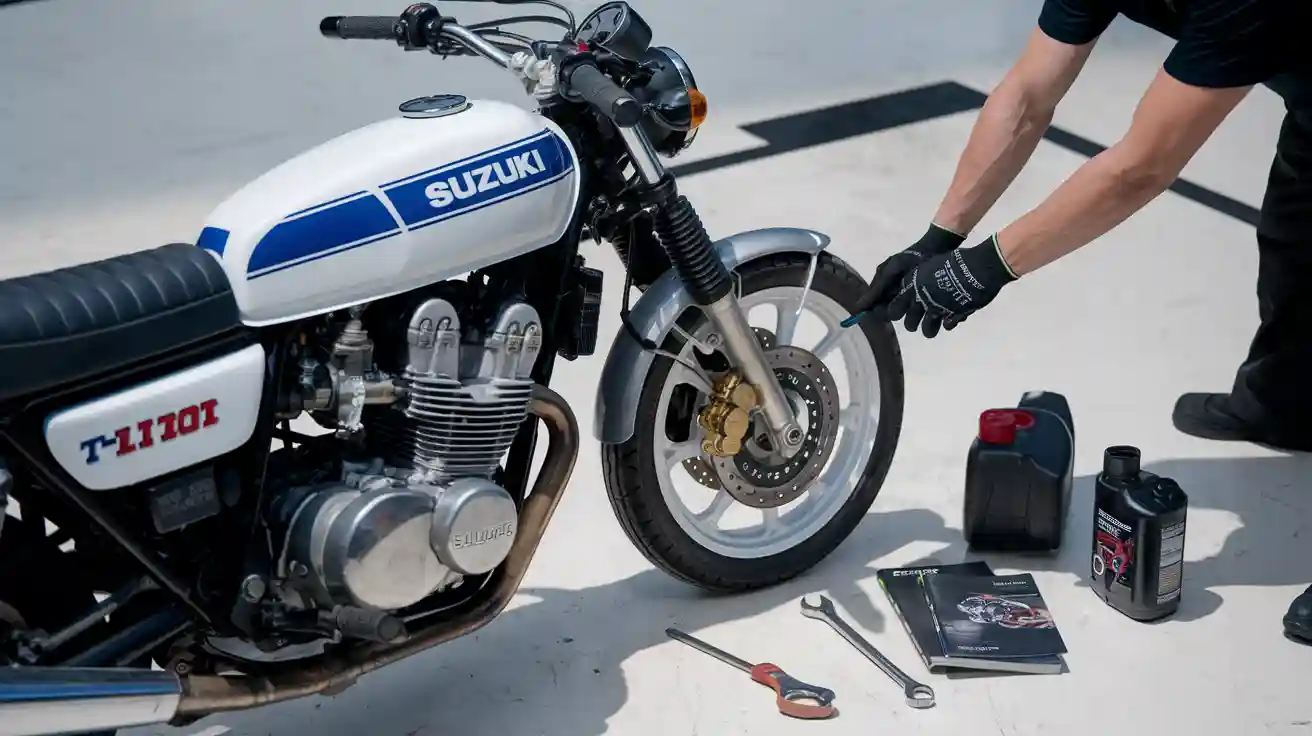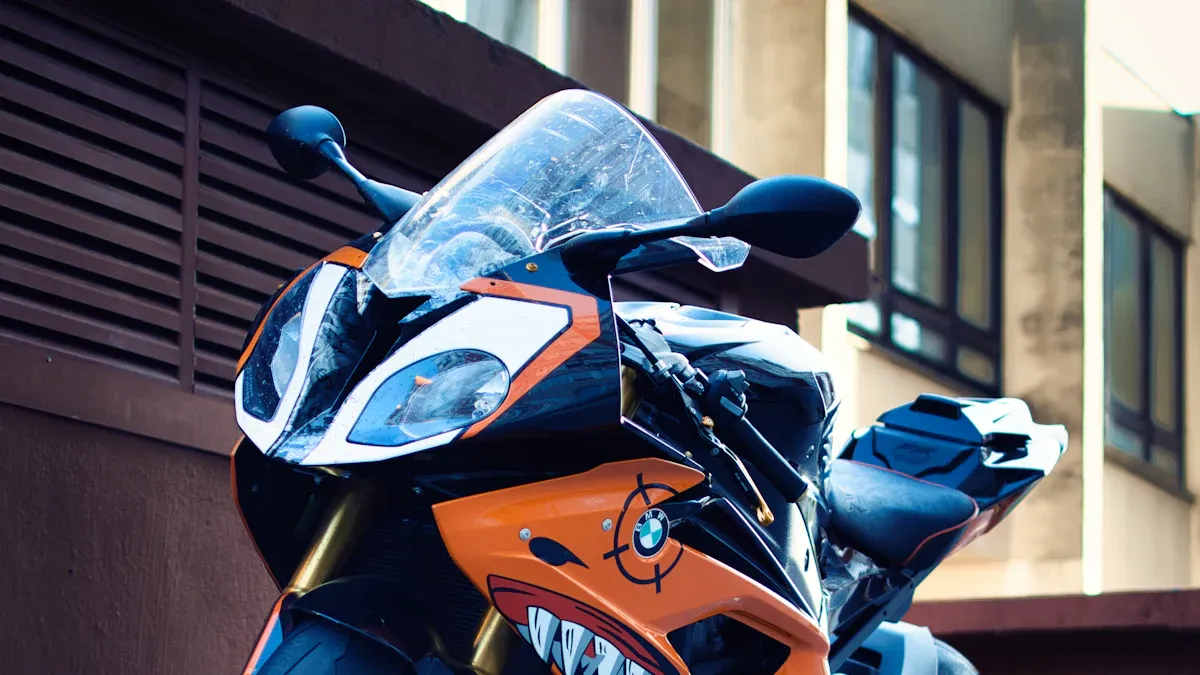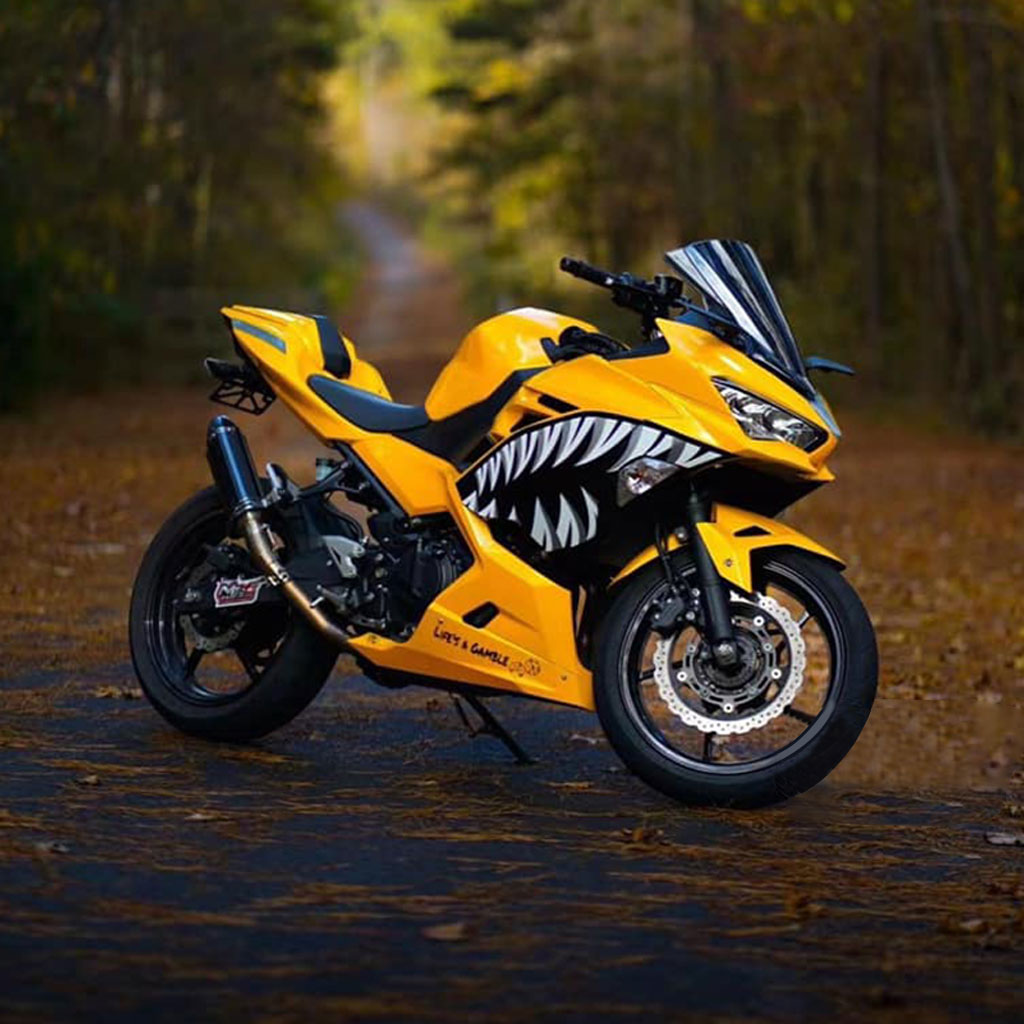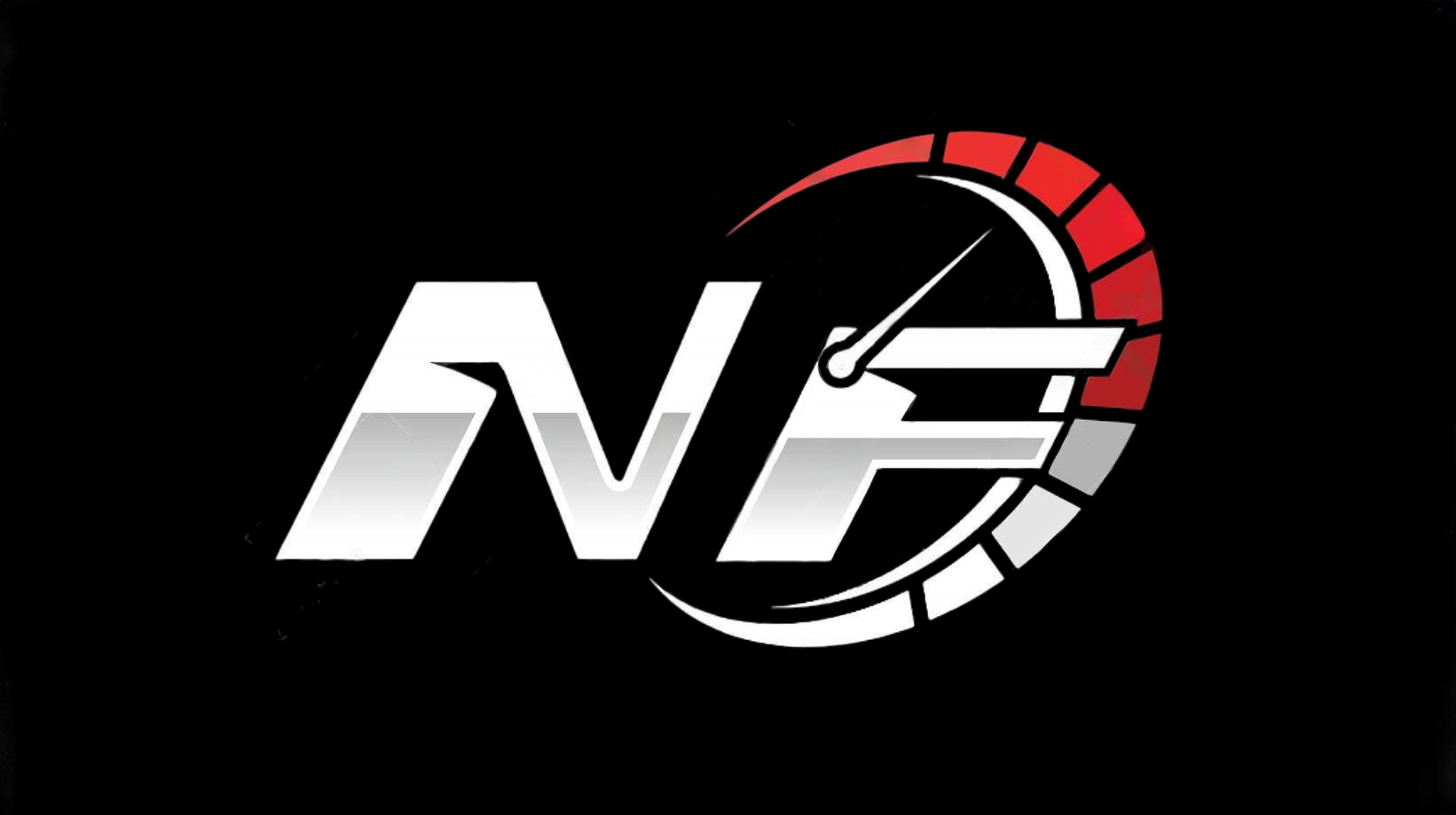TL1000R Maintenance Guide for Peak Performance and Reliability

As a Suzuki TL1000R rider, you know that keeping your sportbike in top shape means more than just enjoying the v-twin power on every ride. Suzuki designed the TL1000R’s engine for high-performance sportbikes, but your motorcycle needs regular maintenance to stay reliable. You should pay close attention to key areas that impact performance and longevity:
- Bearings in the swingarm, steering head, and wheels affect every ride.
- Brake pads, rotors, calipers, and brake lines influence your Suzuki’s stopping power.
- V-twin clutch wear or cooling system neglect can reduce engine output.
- Oil, spark plugs, and air filters keep your Suzuki engine strong.
With proper care, your Suzuki TL1000R gives you the ergonomics, power, and confidence every rider wants on each ride.
TL1000R Essential Maintenance Checklist
Routine Inspection Points for Suzuki TL1000R
You should inspect your Suzuki TL1000R regularly to keep your motorcycle safe and reliable. Start with the basics. Check the tire pressure and tread depth before every ride. Look for cracks or signs of wear on the tires. Examine the brake pads and rotors for uneven wear or damage. Squeeze the brake lever and press the rear brake pedal to make sure both feel firm.
Move to the chain and sprockets. A clean and well-lubricated chain helps your v-twin engine deliver smooth power. Check for tight spots, rust, or excessive slack. Adjust the chain tension if needed. Inspect the swingarm bearings and steering head bearings for play. Wiggle the handlebars side to side and up and down. If you feel looseness, you may need to service these parts.
Look at the lights and signals. Make sure the headlight, taillight, and turn signals work. Test the horn. Examine the fairings and bodywork for cracks or loose fasteners. A secure fairing protects the engine and improves aerodynamics.
Tip: Create a simple checklist for your Suzuki TL1000R. Mark each item after inspection. This habit helps you catch problems early.
Engine Fluid Checks and Changes
Your Suzuki TL1000R’s v-twin engine depends on clean fluids. Check the oil level often. Use the sight glass or dipstick when the motorcycle is upright and on level ground. Change the oil and filter at the intervals listed in your owner’s manual. Fresh oil keeps the engine running smoothly and prevents wear.
Coolant is just as important. The v-twin engine generates a lot of heat. Old coolant loses its ability to protect against corrosion and overheating. Suzuki recommends replacing the coolant every two years for models like the TL1000S, which shares a similar engine with the TL1000R. Following this schedule helps maintain engine health. Sticking to the recommended interval supports engine longevity, even though there is no clear evidence that changing coolant more often will extend the life of your motorcycle.
Check the brake fluid as well. Low or dirty fluid can reduce braking power. Replace it according to Suzuki’s maintenance schedule. Inspect the clutch fluid if your TL1000R uses a hydraulic clutch. Clean fluids help your v-twin engine and braking system perform at their best.
Monitoring Wear Items on the TL1000R
Wear items need your attention to keep your Suzuki TL1000R performing well. Brake pads, rotors, and calipers wear down over time. Listen for squeaks or grinding noises. Replace worn pads before they damage the rotors.
The chain and sprockets also wear out. A stretched chain or worn sprocket teeth can cause poor power delivery from the v-twin engine. Replace these parts if you see signs of wear. Check the air filter often. A clogged filter makes the engine work harder and reduces performance. Clean or replace it as needed.
Inspect the spark plugs. Worn or fouled plugs can cause misfires and poor fuel economy. Replace them according to Suzuki’s recommendations. Look at the coolant hoses and radiator for leaks or cracks. The v-twin engine needs a healthy cooling system to avoid overheating.
Note: Regular maintenance of these wear items helps your Suzuki TL1000R stay reliable and powerful. You protect your investment and enjoy every ride.
Critical Fairings and Parts for Suzuki TL1000R
Front and Side Fairings Impact on Performance
You rely on the front and side fairings of your Suzuki TL1000R for more than just looks. These parts help shape the airflow around your motorcycle. Good fairings reduce wind resistance and help you keep control at high speeds. When you ride your TL1000R, the fairings protect the engine and other important parts from debris and weather. This protection keeps your v-twin engine running strong and helps you avoid costly repairs.
Manufacturers use materials like hard plastic, fiberglass, and aluminum for motorcycle fairings. These materials give you a balance of durability and weight reduction. Lighter fairings help your Suzuki TL1000R accelerate faster and handle better. Strong fairings also protect the engine and frame if you drop your bike. You should check your fairings often for cracks or loose bolts. Damaged fairings can affect your control and reduce the performance of your Suzuki.
Tip: Keep your fairings clean and free of damage. This helps your Suzuki TL1000R keep its aerodynamic edge and protects the v-twin engine from harm.
Air Intake, Ram Air Ducts, and Engine Cooling
The air intake and ram air ducts on your Suzuki TL1000R play a big role in engine performance. These parts guide cool air directly to the v-twin engine. When you ride at higher speeds, the ram air system increases the air pressure going into the engine. This extra air helps the engine burn fuel better and gives you more power.
If the air intake or ducts get blocked or damaged, your engine may run hot or lose power. You should inspect these parts for cracks, loose fittings, or dirt buildup. Clean ducts help your v-twin engine breathe and stay cool. Good airflow also helps you keep control during aggressive riding. When the engine stays cool, you get more reliable performance and longer engine life.
A clean and well-maintained air intake system helps your Suzuki TL1000R deliver strong power every time you twist the throttle. You should make sure all connections are tight and the ducts are free from leaks.
Radiator, Cooling Components, and Engine Health
Your Suzuki TL1000R uses a radiator and other cooling components to keep the v-twin engine at the right temperature. The radiator sits behind the front fairing and uses airflow to remove heat from the coolant. If the radiator gets clogged or damaged, the engine can overheat. Overheating can cause serious engine damage and reduce performance.
You should check the radiator fins for dirt, bugs, or bent metal. Clean fins help the radiator work better. Look at the coolant hoses for cracks or leaks. Make sure the radiator cap seals tight. If you see coolant on the ground, fix the leak right away. A healthy cooling system helps you keep control of engine temperature and protects your Suzuki from breakdowns.
Note: Regularly inspect and flush the cooling system. This simple step keeps your v-twin engine running cool and strong, even during long rides or hot weather.
A well-maintained cooling system gives you peace of mind. You know your Suzuki TL1000R will deliver reliable power and performance every time you ride.
Subframe, Mounting Hardware, and Structural Integrity
You depend on the subframe and mounting hardware of your Suzuki TL1000R for both safety and performance. The subframe supports the seat, tail section, and sometimes the rear suspension. If you want your Suzuki to handle well and feel stable, you need to keep the subframe in top condition. A strong subframe helps the chassis stay rigid, which improves comfort and control.
You should check the subframe for cracks, bends, or rust. Use a flashlight to look at the welds and joints. If you see any damage, fix it right away. A weak subframe can cause the chassis to flex. This flex can make the suspension work poorly and reduce comfort during long rides.
Mounting hardware holds the fairings, engine, and suspension parts to the chassis. Loose or missing bolts can cause rattles and even lead to bigger problems. You should use a torque wrench to check that all bolts have the right tightness. Suzuki recommends checking the mounting hardware at every major service. This habit keeps your chassis strong and your suspension working as designed.
Tip: Make a checklist for your Suzuki. Include all mounting points for the subframe, suspension, and fairings. Mark each item after inspection.
A healthy chassis gives you better comfort and more confidence. The Suzuki TL1000R uses a strong frame to handle the power of its v-twin engine. If you want to upgrade, you can look for premium suspension components. These parts can improve both comfort and handling. Some riders choose high-end suspension for even better control on the road or track.
The suspension connects the wheels to the chassis. Good suspension absorbs bumps and keeps the tires on the road. If you notice poor comfort or strange noises, check the suspension mounts and bushings. Suzuki designed the TL1000R to work best with a solid chassis and well-tuned suspension.
Here is a simple table to help you track your inspections:
| Component | What to Check | How Often |
|---|---|---|
| Subframe | Cracks, bends, rust | Every 3 months |
| Mounting Hardware | Tightness, corrosion | Every 3 months |
| Suspension Mounts | Wear, looseness | Every 6 months |
| Chassis | Flex, damage | Every 6 months |
You should also listen for new noises while riding your Suzuki. Creaks or rattles can mean loose hardware or a problem with the chassis. Fix these issues early to keep your comfort and safety high.
Note: Never ignore damage to the subframe or chassis. These parts are key to your Suzuki’s strength and the way the suspension works. Regular checks help you avoid expensive repairs and keep your TL1000R riding smooth.
If you ride hard or carry a passenger, you put more stress on the subframe and suspension. Check these parts more often for signs of wear. Suzuki built the TL1000R for performance, but regular care keeps the comfort and handling at their best.
TL1000R Inspection and Replacement Guide
Inspecting Fairings and Engine Components for Damage
You should inspect your Suzuki TL1000R fairings and engine parts often. Look for cracks, scratches, or loose panels on the fairings. These parts protect your v-twin engine and help the chassis stay strong. If you see broken or missing fasteners, replace them right away. Check the engine for oil leaks, corrosion, or worn hoses. Use a flashlight to look at hard-to-see spots near the chassis and engine.
For hidden engine damage, use a multimeter to test ignition coils and wiring. This helps you find problems that you cannot see. Suzuki built the TL1000R with a self-diagnostic system. You can use a jumper wire on the dealer mode coupler to read ECU codes. These codes show faults in sensors, ignition, or fuel injection. This method helps you keep your v-twin engine healthy and your Suzuki running well.
Tip: Clean your fairings and engine before inspection. Dirt can hide damage and make it hard to spot problems.
Checking Mounts, Fasteners, and Suzuki Hardware
You need to check all mounts and fasteners on your Suzuki TL1000R. Loose bolts can cause rattles and weaken the chassis. Use a torque wrench to make sure every bolt is tight. Look at the subframe, engine mounts, and fairing brackets. If you find rust or stripped threads, replace the hardware. Suzuki recommends checking these parts at every major service.
A strong chassis depends on good hardware. The v-twin engine creates a lot of vibration. This can loosen bolts over time. Make a checklist for your Suzuki and mark each mount and fastener after inspection. Accessories like frame sliders or aftermarket fairings also need secure mounting. Do not forget to check these extra parts.
Replacing Worn or Damaged TL1000R Parts
Replace worn or damaged parts on your Suzuki TL1000R to keep it safe and reliable. Common parts that need replacement include the chain, sprockets, brake calipers, oil filter, air filter, spark plugs, and hoses. The v-twin engine works best with clean oil and a fresh air filter. Change the oil every 4,000 miles and inspect the air filter often.
Here is a table of frequently replaced Suzuki TL1000R parts:
| Part / Component | Reason for Replacement | Typical Interval or Notes |
|---|---|---|
| Chain and Sprockets | Wear, rust, or damage | Clean/lube every 600 miles; replace if worn |
| Brake Calipers | Stuck pistons | Upgrade if needed |
| Oil and Oil Filter | Routine maintenance | Change every 4,000 miles |
| Air Filter | Dirt and clogging | Replace as needed |
| Spark Plugs | Wear or fouling | Replace every 7,500-15,000 miles |
If you need to replace fairings, expect to pay about $245 for a full kit for Suzuki TL1000R models from 1998 to 2002. This price covers many color options. Always use quality parts and accessories to keep your chassis and engine in top shape.
🛠️ Note: Regular replacement of worn parts and accessories helps your Suzuki TL1000R stay reliable and safe for every ride.
Recommended TL1000R Upgrades for Performance

Aftermarket Fairings and Aerodynamic Improvements
You can boost your Suzuki TL1000R’s performance by upgrading to aftermarket fairings. These fairings use lighter materials and improved shapes. Lighter fairings help your sportbike accelerate faster and improve handling. You will notice better control at high speeds. Many riders choose fairings with wind-tunnel-tested designs. These shapes reduce drag and keep your ride stable. Some aftermarket fairings also offer better cooling for the engine. This upgrade helps you keep the engine at the right temperature during long rides.
Aftermarket fairings often come with stronger mounting points. This feature increases comfort and keeps the fairings secure. You can find fairings in many colors and styles. These options let you match your accessories and show your style. Riders who want responsive handling and exciting power often start with this common modification.
Tip: Always check that your new fairings fit your Suzuki TL1000R’s chassis and mounting hardware before you buy.
Performance Air Filters, Intakes, and Engine Response
You can improve your Suzuki TL1000R’s engine response and fuel efficiency with a high-flow air filter. The K&N air filter is a popular choice for this sportbike. It increases horsepower and gives you better throttle response. You will also see improved fuel economy. This filter is washable and reusable, so it saves you money over time. Many riders on Suzuki forums report that a K&N filter, paired with other engine modifications like a Power Commander and a Yoshimura exhaust, leads to real gains in power. One rider saw a jump from 118 to 124 rear wheel horsepower after these upgrades. You will feel the engine become more responsive and powerful on every ride.
A performance air filter is a simple upgrade. It does not void your Suzuki warranty. You can install it with basic tools. This modification helps your engine breathe better and gives you more control and comfort during every ride.
Upgraded Cooling Solutions for Suzuki TL1000R
Your Suzuki TL1000R’s engine works hard on every ride. Keeping it cool is key for performance and comfort. You can upgrade the cooling system with several modifications. Many riders replace the stock thermostat with a V-Strom thermostat rated at 87°C. This change keeps the engine at a stable temperature and avoids overheating. You can also move the temperature sensor for more accurate readings. This step helps the ECU adjust fueling for better power and control.
Other upgrades include a TLR water pump cover, a bypass hose, and a tee piece in the lower hose. These parts improve coolant flow and keep the engine cool. Copper tubing for oil cooling is another smart choice. Copper moves heat away from the engine better than aluminum. In hot climates, you can bypass the thermostat and connect the oil cooler directly to the engine. This setup makes the cooling system simpler and more effective. Avoid electric fans, as they only help at low speeds and add extra weight.
Note: Upgraded cooling solutions protect your engine, improve comfort, and let you ride longer without worry.
OEM vs. Aftermarket Parts for Engine and Fairings
When you maintain your Suzuki TL1000R, you face a choice between OEM and aftermarket parts. OEM stands for Original Equipment Manufacturer. These parts come from Suzuki and match the original design. Aftermarket parts come from other companies. Many riders use both types for different reasons.
OEM fairings fit your Suzuki perfectly. They use strong materials and match the color of your bike. You get reliable protection for your engine and suspension. Aftermarket fairings cost less, but they may not fit as well. Some riders notice that aftermarket fairings feel thinner and less strong. You might need to paint them yourself. Here is a table to help you compare:
| Fairing Type | Price (USD) | Quality/Notes |
|---|---|---|
| OEM Fairings | ~$436.41 | High quality, perfect fitment, durable, color matched |
| Aftermarket Fairings | ~$400 | Slightly cheaper, unpainted, may have lower thickness and strength |
You should think about how each part affects performance. OEM parts keep your Suzuki running the way the factory designed. They help your suspension work as planned. Aftermarket parts can change the way your bike feels. Some riders use aftermarket fairings as part of common modifications to save weight or change the look. Lighter fairings can improve acceleration and handling. However, poor fitment can cause rattles or stress on the suspension.
Engine parts also matter. OEM engine parts give you reliable power and long life. Aftermarket engine parts can boost performance, but you need to choose carefully. Some modifications increase power but may stress the suspension or cooling system. Always check that new parts work well with your Suzuki’s design.
Tip: If you want the best fit and reliability, choose OEM parts. If you want to try new modifications or save money, aftermarket parts offer more options. Test each change to see how it affects your Suzuki’s performance and suspension.
Pro Tips for TL1000R Longevity
Cleaning and Protecting Suzuki Fairings
You want your Suzuki sportbike to look sharp and perform well on every ride. Clean fairings help you keep your motorcycle in top shape. Use a soft cloth and mild soap to wash the fairings. Avoid harsh chemicals that can damage the finish. Dry the fairings with a microfiber towel to prevent water spots. Wax the fairings once a month to protect the surface from dirt and UV rays. This step keeps your Suzuki looking new and helps you maintain comfort and control. Check for scratches or cracks after each ride. Fix small issues early to avoid bigger problems later. A clean motorcycle gives you more riding confidence and better ergonomics.
Preventing Common TL1000R Issues
You can avoid many problems with your Suzuki TL1000R by following a smart maintenance routine. Check the battery before every ride. Make sure the terminals stay clean and tight. Inspect the tires for wear and proper pressure. Look at the chain and sprockets for signs of damage. Lubricate the chain often to keep your sportbike running smoothly. Test the brakes and lights before you start your ride. Listen for odd noises from the engine or suspension. Early action helps you keep control and comfort high. Many riders find that regular checks improve handling and extend the life of their Suzuki motorcycle.
Tip: Keep a logbook for your Suzuki. Write down each maintenance task and inspection. This habit helps you spot patterns and plan future care.
Storage, Seasonal Care, and Engine Preservation
When you store your Suzuki sportbike, you protect your investment and ensure comfort on your next ride. Park your motorcycle in a dry, cool place. Use a cover to shield it from dust and sunlight. Add fuel stabilizer to the tank if you will not ride for several weeks. Charge the battery every month to keep it strong. Check the tire pressure and move the motorcycle a little each week to prevent flat spots. Lubricate the chain and cables before storage. These steps help you keep control, comfort, and ergonomics at their best. When you return for your next ride, your Suzuki will feel ready and reliable. Every rider who cares for their motorcycle this way enjoys better handling and more confidence on the road.
You keep your Suzuki TL1000R strong when you follow a regular maintenance plan. Every rider should check their bike before each ride. You protect your Suzuki and enjoy every ride when you replace worn parts and upgrade smartly. Riders who plan upgrades and use quality Suzuki parts get the best ride. Make a schedule that fits your ride style. Ask other riders for tips. Visit trusted shops for Suzuki parts. Each ride becomes safer and more fun when you care for your bike.
Tip: Riders who track every ride and upgrade often see their Suzuki last longer.
FAQ
How often should you change the oil on your TL1000R?
You should change the oil every 4,000 miles or at least once a year. Fresh oil keeps your engine running smoothly and helps prevent wear. Always use the oil type recommended in your Suzuki owner’s manual.
What is the best way to clean TL1000R fairings?
Use a soft cloth and mild soap with water. Avoid harsh chemicals. Dry the fairings with a microfiber towel. Wax the fairings monthly to protect the finish. This routine keeps your bike looking sharp and helps prevent damage.
Can you use aftermarket parts without hurting performance?
Yes, you can use quality aftermarket parts. Many riders upgrade fairings, filters, and cooling parts for better performance. Always check that the parts fit your TL1000R. Poorly fitting parts can cause problems or reduce reliability.
What should you check before every ride?
Check tire pressure, brakes, lights, and chain tension. Look for leaks or loose bolts. Test the horn and signals. These quick checks help you catch problems early and keep your TL1000R safe and reliable.
See Also
Essential Tips For New Riders To Maintain Motorcycles
Top Motorcycle Maintenance Hacks That Help Cut Costs
Detailed Analysis Of Kawasaki Ninja 650 Fairing Performance

